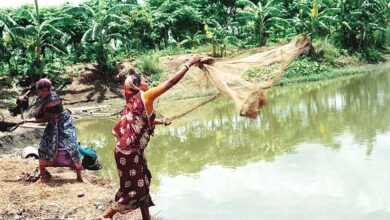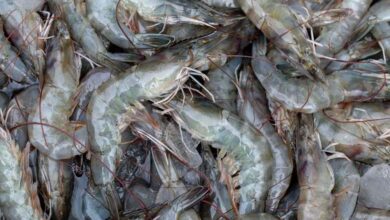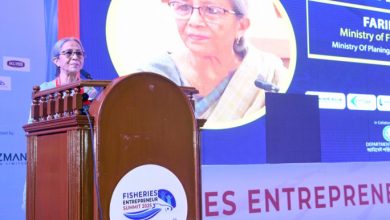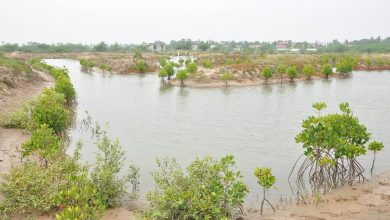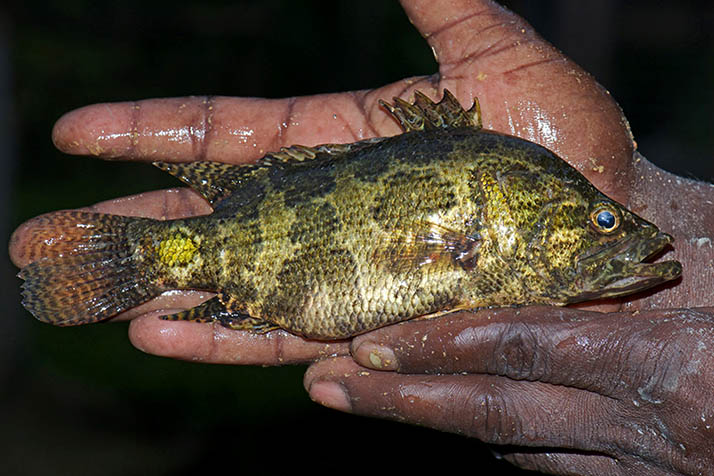
In Bangladeshi rivers, the Bheda or Meni fish, which at first glance resembles Koi fish (Anabas cobojius), a close to extinct species mostly to lack of breeding grounds. But, there is a good news that it has been bred already in the laboratory at Bangladesh Fisheries Research Institute, and now in plan to farm this species in larger quantities.
A Bheda fish (Gangetic leaffish or Nandus nandus) can easily be mistaken for a Koi fish due to its dark green coloration. Depending on the location, this little freshwater fish has various names. In some cultures, it is called “Meni”, while in others, “Nandoi” or “Roina”. People in northern parts of the country call it “Bheda”.
This type of fish used to populate a lot of the country’s canals, bogs, and wetlands. During the monsoon season, they were also found in flooded paddy fields and jute fields. Due to excessive use of chemicals and pesticides in croplands, pollution of the environment, lack of water bodies, and climate change, it has become nearly extinct.
Historically, Bangladesh had more than 300 native freshwater fish species, but many have vanished or are in danger of extinction.
An IUCN report published in 2015 outlined a number of threats impacting freshwater fish populations. It has been reported that fish populations in Bangladesh have declined due to a variety of factors, such as degradation of habitats, infrastructure development, dry up of water bodies, dewatering, conversion of wetlands, overfishing, and aquatic pollution.
There has been an alarming decline in open rivers and other bodies of water in Bangladesh due to development interventions, unplanned urbanization, encroachment, and siltation, which are destroying the habitats of indigenous fish species.
Using destructive fishing gear and nets is another major cause.
It is caused by two deadly types of snares: current nets and chinaduari. Particularly the latter attracts the tiniest aquatic organisms as well as fish fries.
Bangladesh’s first Red List of Threatened Animals was published in 2000 by the International Union for Conservation of Nature (IUCN). There were 266 freshwater and brackish fish species assessed, 54 of which were listed as “threatened.”
12 of them were classified as critically endangered, 28 as endangered, and 14 as vulnerable.
As of 2015, there are 253 freshwater fish species assessed, and 64 “threatened” species have been identified. Nine species were classified as critically endangered, 30 as endangered, and 25 as vulnerable. Near-threatened species accounted for another 27.
In spite of this, the artificial breeding conducted by the scientists at BFRI is now bringing hope to the nation.
The artificial breeding of Bheda fish is just a glimpse of the effort of BFRI scientists.
In the entire world, Santahar substation is the only location where Bheda fish are artificially bred. It is crucial for the preservation of this floodplain fish to have suitable soil and water.
Since buying 200 Bheda fish fries from the Santahar substation eight months ago, Latiful Parvez has been raising Bheda fish in the Dhanjail upazila of Naogaon.
“Many native fish species are at danger of going extinct. The good news is that scientists were able to reproduce these fish. Farmers should now follow suit. I’m now raising Bheda fish, and I intend to sell it soon,” the farmer stated.
Currently, this fish sells for Tk500-700 per kg in the market, according to Santahar substation scientist Shishir Kumar Dey.
However, this is not the first time that Bangladeshi scientists have achieved such incredible results.
Researchers at the BFRI have previously succeeded in producing fry of 23 almost extinct local fish species. A commercial method of cultivating these fish has been successfully developed by researchers at the institute. They are ─ Pabda, Gulsha, Gujiayir, Rajputi, Chital, Meni, Tengra, Foli, Balachata, Shing, Mohashoal, Gutum, Magur, Beral, Kunchia, Bhagna, Khalisha, Kalibaoush, Koi, Bata, Gojar, Swarputi and Ganimachh.
The Bangladesh Fisheries Research Institute is currently writing success story after success story regarding its efforts to artificially produce endangered indigenous fish, and the latest is the Bheda.
No information has been found regarding the artificial production of this fish anywhere else in the world. This is the first artificial breeding of Bheda fish in Bangladesh.
Previously, BFRI scientists in Saidpur upazila devised an artificial breeding method for boirali fish, a species listed as threatened by the government.
Early in 2020, The BFRI led a conservation initiative to preserve 162 species of fish, including those threatened by the IUCN. Researchers employed nursery and hatchery procedures to make the species available across the country.
Bangladesh has now approximately 1.2 million fishermen working full-time for their livelihood, plus another 10 million who fish for subsistence or to supplement their incomes.
Several studies have shown that self-recruiting native species are crucial to rural survival, both in natural ecosystems and in controlled ones. Furthermore, these indigenous species are environmentally friendly in addition to providing additional income and protein for rural families. Due to the high costs of buying pulses and vegetables in the countryside, rural people often depend on these native fish that they catch as bycatch
Thus, a national campaign against destructive fishing is needed to protect endangered native species. Additionally, the local administration should launch regular drives against those who use such environmentally harmful nets.
Jaber Bin Abdul Bari
Department of Oceanography, NSTU

